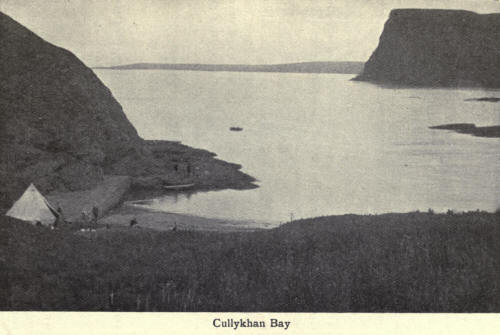|
If latitude alone determined
climate, Scotland would experience the rigours of Southern Greenland; but
thanks to its projection into the Atlantic with the genial south-west winds,
it enjoys a climate of moderate heat and cold. Banffshire, while open
towards the milder west and to some extent protected from the colder east,
has a high latitude, an exposure sloping to the north and facing winds from
the north polar seas, and barrier heights to south and south-west. Yet its
climate is marvellously favourable.
Although there are parts
where winters are severe, and, lingering, too often chill the lap of spring,
there are areas on the seaboard and in sheltered parts of the middle of the
county, where conditions are in a way surprising when regard is had to the
northern situation. At Banff, for instance, where the sunshine record is
among the highest in the kingdom, the mean temperature in 1915 was 45•7 degs.,
in 1916 46•1 degs., and in 1917 45.8 degs. In these three years the maximum
temperatures were respectively 74 Begs. (May 24 and Sept. 8); 77 degs. (July
26); and 8o degs. (Aug. 6), while the minimum temperatures were i6 degs.
(Dec. 5); 23 degs. (Dec. 9); and i 5 degs. (Mar. 9). July and August are the
warmest months and January the coldest. In 1915 the average daily sunshine
period was, 3 hrs. 35 mins., in 1916 it was 3 hrs. 6 mins., and in 1917 3
hrs. 48 mins.

In 35 years, 1883-1917, in
which rainfall readings have been taken at Banff, the average works out to
28 59 inches per annum, varying from 22 inches in 1904 to 34 L inches in
1895. April is the driest month, followed by June and February; the wettest
months are October and November. The general relation between rainfall and
elevation above sea level is well shown on rainfall maps of Banffshire. A
fringe along the coast has less than 3o inches a year, the line marking the
fall of 35 inches curves just south of Dufftown, the higher region in the
extreme south of the county has a still higher yearly average.
The most prevalent winds are
south and south-east. The strength of the northerly winds is shown by the
crouching of trees and shrubs in exposed situations along the coast as they
bend away from the sea.
Along the coast snow does not
lie long, but it is otherwise in such districts as the Cabrach, Glenrinnes,
and Kirkmichael. Delightful as the summer often is there, the winter is
frequently long and severe. In not a few years there is an anxious race
between the maturing corn crops and the on-coming of the winter frost and
snow. |

